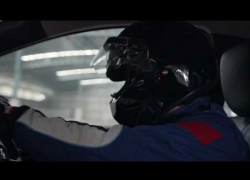Back in the 1980s, Filipinos weren’t exactly spoiled for choice when it came to picking out an automobile. The slew of brands and body styles that we know today were non-existent. It was either a sedan, a coupe, or a van. Sure, there were a few station wagons but these were few and far between0 And the SUV? It wasn’t even heard of at the time.
Then there were the automotive brands. These were down to five—Toyota, Mitsubishi, Ford, Isuzu, and Datsun/Nissan—that officially set up shop in the country. Mercedes-Benz had a dealership but it was more of an importer. Thus you saw the usual suspects roaming our not-so-traffic-filled streets.
Besides the Mitsubishi Lancer “boxtype” that ruled the roost during the 1980s, the Toyota Corona Silver Edition was another crowd favorite. To many folks, the Corona badge meant acquiring a premium yet still affordable Toyota. So what was so special about this Silver Edition, you ask?
The term was essentially used to mark the nameplate’s 25th year in the automotive industry. First seen in 1957, the Corona was originally positioned as the second highest model in the Toyota hierarchy, after the Crown. This until the Cressida entered the scene in 1968. But even then, the Corona still had an upscale vibe to it.
Unveiled in 1982, the Corona Silver Edition featured a wedge profile that made it look long and low. Adding to the illusion of length were the black urethane bumpers that not only gave extra protection but likewise put in a bit of style.
While looks are subjective, what the Corona did boast of were features that, despite its relatively affordable pricetaag, were standard fare. One got stuff like an archaic (by today’s standards) AM/FM radio with preset buttons, remote trunk and fuel door release, adjustable lumbar support, front headrests that adjusted for both height and tilt, front seatback pockets, rear headrests, rear seat center armrest, and height-adjustable driver’s seat,
Sure, it wasn’t the most powerful of the bunch. In fact, its 1.6-liter 12R-M four-cylinder motor could hardly carry its weight in a straight line. But this engine was smooth and quiet for its day. And while it wasn’t built for speed, the car and its McPherson strut front and coil spring rear suspension was one of the smoothest in the business. Using this car as a driver-driven conveyance wasn’t unheard of.
And it wasn’t just because Filipinos didn’t exactly have much of a choice, hence picking a car like the Silver Ed, as it was fondly called. It could also have been the rather upscale look and features at a relatively affordable asking price. And of course, there is that cheap-to-run Toyota reputation. Our family had one, staying with us for around 8 years. And the only things that broke down were a fourth gear that went south, as well as the usual rusted exhaust (what 80s car didn’t have this?). Apart from these, it was one solid offering.
So solid, in fact, that you still see a few restored examples trading hands these days. It may have been Toyota’s Silver Edition offering. But it would seem that this car will live on in the hearts of old-school aficionados for years to come.



